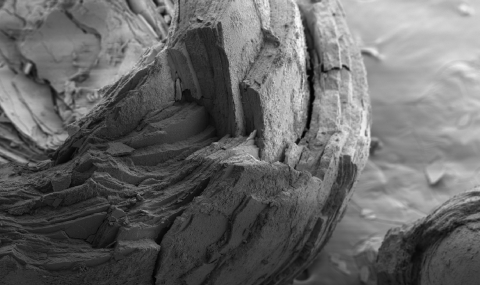Paleoclimate and paleohydrology are often reconstructed using the stable oxygen isotope composition of minerals in sedimentary rocks, soils, and cave deposits. A relatively strong temperature dependence of mineral-water oxygen isotope fractionation, however, often does not permit confident identification of the main driver of oxygen isotope variation in these archives—temperature or the oxygen isotope composition of the fluids from which the minerals precipitated.
We developed oxygen isotopes in iron oxides as a means to overcome this issue, since our and others' experiments have shown that the oxide-water oxygen isotope fractionation is only weakly temperature-dependent. This means that variations in the oxygen isotope composition of iron oxides can be ascribed almost entirely to variations in the isotopic composition of their parent fluid.
With this new proxy, we addressed the puzzle of 18O-depleted minerals in ancient sedimentary rocks (carbonate, chert), which about three billion years ago display 18O/16O ratios 10-15 parts-per-thousand (permil) lower than today. Rather than previous interpretations of these data to reflect ocean temperatures of about 70-80 degrees Celsius in Earth's Archean Eon, we find that the secular increase in 18O/16O ratios in sedimentary rocks reflects an increase in 18O/16O ratios of the seawater itself.

Scanning electron (left) and optical (right) microscope images of hematite-quartz ooids from the approximately 1.45 billion-year-old Sherwin Ironstone.
Examples:


